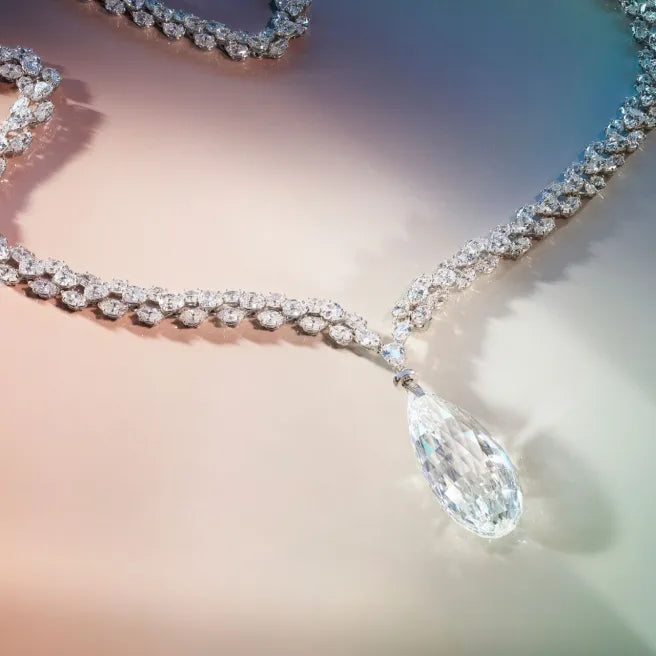
August12
The Briolette of India – The Oldest Diamond in Recorded History
The oldest diamond in recorded history was first mentioned in the 12th century when it made it's way to Europe, most likely in the form of booty captured during the 2nd Crusade. The stone was initially owned by the Nawabs of Punjab, which essentially equates to Indian royalty from the period. Realistically, the “Briolette of India” was most likely a was not a briolette cut during the 12th century. It was most likely a large rough diamond, or potentially a polki cut, which are not faceted, but polished to enhance the visual appearance.
The World’s Oldest Recorded Diamond Comes to Europe
The famous stone was originally gifted to Eleanor of Aquitaine by her husband King Louis VII of France, both of whom were traveling with the crusading soldiers. There is no documentation of how they acquired the stone, but let's be real, it probably wasn't purchased. Despite the jewels, this was not a happy marriage and campaigning together in the holy land made their marriage far worse. The two were subjected to a bitter annulment discussion which lasted years before finally being granted on March 11, 1152 on grounds of consanguinity (which essentially means they were related – Eleanor was Louis’ third cousin once removed). The two shared two daughters from this marriage, custody of whom were awarded to Louis.
Following the finality of her annulment, like literally two weeks later, Eleanor would go on to marry the Duke of Normandy, who would soon also earn the title King Henry II of England. Ironically, she was more closely related to Henry than she had been to Louis, but I suppose that just comes with the territory of being in royal families during the Middle Ages. From this marriage, she and Henry would have five sons and three daughters. The most famous of their children, King Richard I of England, also known as Richard the Lionheart, is alleged to have inherited the famous stone and taken it into battle with him during the Third Crusade.
Going Into Hiding
From here, the storied diamond is lost for a few centuries, only to resurface in the late 16th century when King Henry II of France gifted the diamond to his famous mistress, Diane de Poitiers. It is suspected that following King Henry’s death, the stone became a part of the French Crown Jewels, which means it was most likely either stolen in 1792 or sold off in 1887.
A Return as Mysterious as It’s Disappearance
The diamond then mysteriously reappears once again in 1908 when it was recut from what was referred to as a “double rose cut” into a more pure briolette cut and sold to Cartier. It was set as a pendant with a large pearl, and then a year later, it was paired with a pair of 22 carat emeralds and sold to American Financier, George Blumenthal. Mr. Blumenthal’s wife, Florence Meyer Blumenthal, wore the piece in a Tiara. Following George Blumenthal’s death, the stone was acquired by Harry Winston and sold to an Indian Maharaja.
From here, the stone passed through many hands and always came back to Harry Winston in between owners. In 1971, Harry Winston set the famous stone in a platinum necklace decorated with marquise and pear shape diamonds and sold the piece to Austrian billionaire Helmut Horten, who gifted the stone to his wife, Heidi.
A Jewelry Sale As Significant and Contentious As the Diamond's History
Upon Heidi’s death in 2022, the 90.38ct D color, Type IIa “Briolette of India” was sold by Christie’s in what was arguably the most important and most controversial jewelry sale in modern history. The Briolette of India necklace was sold to an unknown collector for $7.1m.
The main reason for the controversy surrounding the sale comes from the fact that Helmut Horten made a significant amount of money purchasing Jewish businesses, which were sold under duress, during World War II.
Combined with the rest of Heidi's collection, the jewelry sale brought in a total of $202m, making it the most expensive private jewelry collection of all time. The previous record being from the collection of Elizabeth Taylor in 2011, which totalled $137.2m.



